Physical Address
304 North Cardinal St.
Dorchester Center, MA 02124
Physical Address
304 North Cardinal St.
Dorchester Center, MA 02124
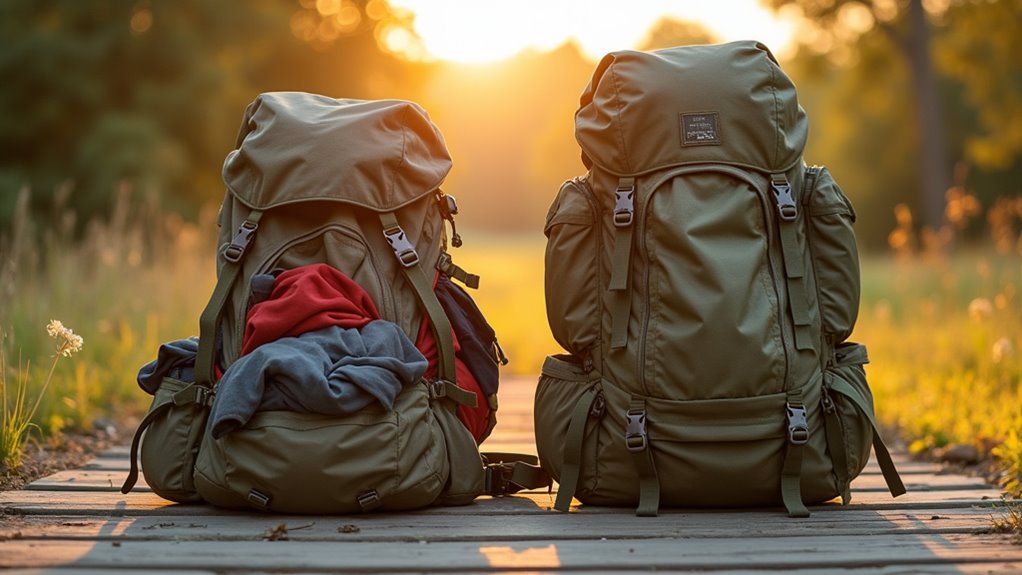
Learn how choosing the perfect camping backpack can transform your outdoor adventure, from essential features to budget-friendly options.
When you’re gearing up for a camping trip, your backpack choice can make or break your outdoor experience. You’ll find countless options on the market, from budget-friendly basics to premium expedition packs, but the key isn’t always spending more money. It’s about matching the right pack to your specific needs and comfort requirements. Let’s explore how to select a camping backpack that’ll serve you well without draining your wallet.
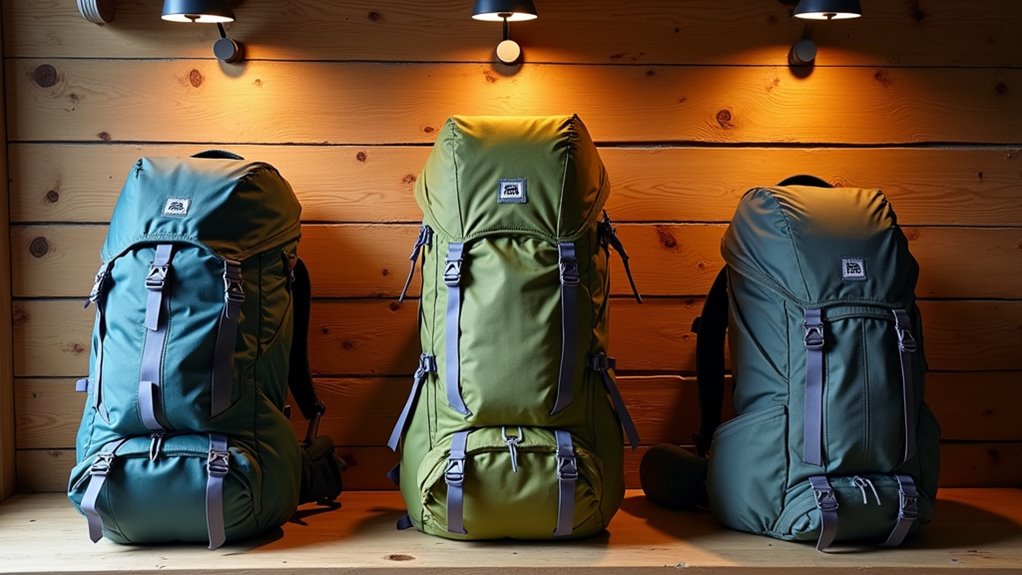
When selecting a camping backpack, you’ll encounter several distinct types, each designed for specific needs and conditions.
Frameless backpacks offer an ultralight solution if you’re carrying minimal gear, while internal-frame packs provide better balance and weight distribution for most camping trips.
For heavy loads and extended journeys, external-frame backpacks deliver superior support and load management. Modern designs have evolved from traditional external frames to focus on ergonomic minimalist designs.
Consider your trip duration when choosing capacity. Weekend adventures work well with 30-50 liter packs, while multiday excursions require 50-80 liters. Essential Camping Gear is an important consideration when determining the appropriate pack size.
If you’re planning extended wilderness stays, look for packs over 70 liters. For day hikes or quick overnight trips, hydration packs and ultra-light daypacks provide comfortable solutions without excess bulk.
Each type offers specific advantages, so match the pack to your camping style and duration.
A well-designed camping backpack combines essential features that maximize comfort, durability, and practicality on the trail. You should prioritize an adjustable torso harness and padded hip belt to guarantee proper weight distribution and prevent fatigue during long hikes. The flexible hip belt allows natural movement with your gait while keeping the pack stable during challenging terrain.
Look for packs with quick-access outer pockets and separate compartments for efficient organization. Don’t overlook weather protection features like integrated rain covers and water-resistant materials – they’ll keep your gear dry when conditions turn wet. Essential Camping Gear for Every Outdoor Adventure is crucial to consider when selecting the right camping backpack.
Smart organization and weather protection aren’t optional – they’re vital features that can make or break your camping experience.
Key comfort elements should include a suspended mesh back panel for ventilation and sturdy compression straps to stabilize your load.
For safety and convenience, check that the pack includes a sternum strap with built-in whistle, hydration bladder compatibility, and attachment points for trekking poles. These features aren’t just extras – they’re essential for a successful camping trip.
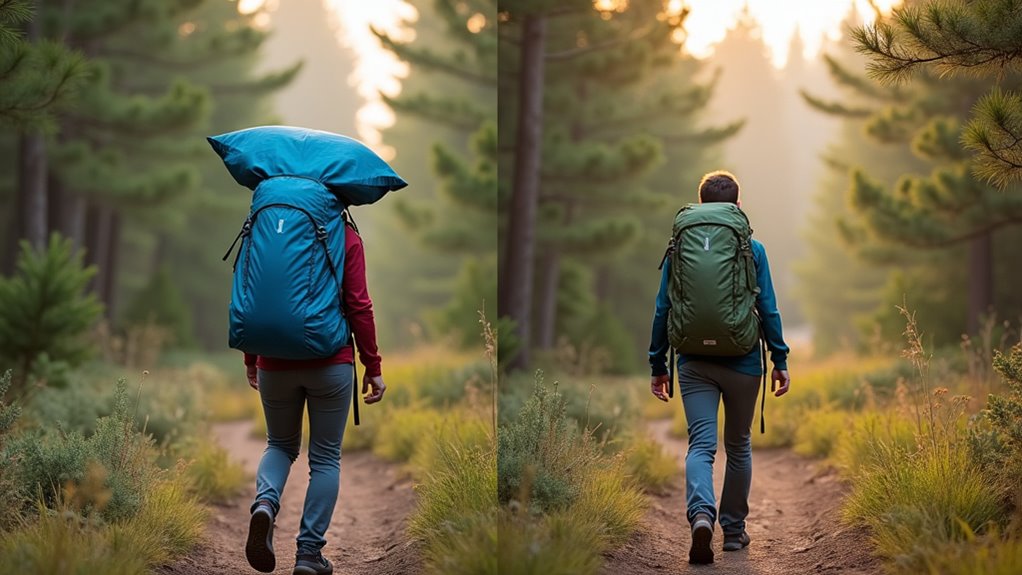
Properly sizing your camping backpack can make the difference between an enjoyable trek and a miserable outdoor experience.
Start by measuring your torso length from the C7 vertebra to your iliac crest – this is more important than your overall height. You’ll also need to measure your hip circumference since the hip belt carries most of your pack’s weight. The hip belt should transfer 80% of pack weight to your hips for proper load distribution. Essential gear for your next camping adventure can also influence the size of your backpack.
When selecting your pack size, consider your trip duration:
Don’t skip the fitting process.
Try on your pack with weight, adjust the shoulder straps and hip belt, and walk around to test comfort. You’ll want the hip belt resting just above your hip bones while keeping the shoulder straps flat against your body.
Internal frames excel at stability and load distribution, making them ideal if you’re hiking on uneven terrain. They’ll transfer weight effectively to your hips while keeping the load close to your body.
If you’re carrying heavy or irregular items, consider an external frame pack. You’ll get superior ventilation and versatility for bulky gear, though they’re best suited for maintained trails. More experienced hikers often avoid these packs due to their too many drawbacks for modern backpacking.
For ultralight enthusiasts who pack under 10 pounds, frameless packs offer significant weight savings but sacrifice comfort with heavier loads. Essential camping gear can be carried more comfortably with internal or external frame packs.
Don’t overlook ventilation features – internal frames often include mesh back panels, while external frames naturally create airflow space.
Choose based on your typical load weight and hiking conditions to guarantee the best performance for your needs.
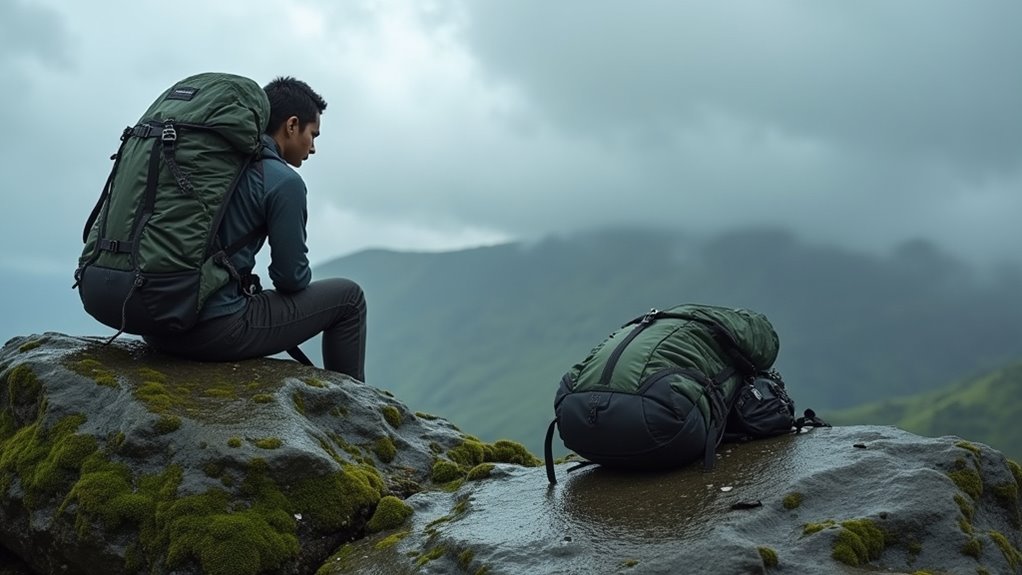
Weather resistance can make or break your camping experience when unexpected storms roll in. You should focus on backpacks featuring TPU or PVC-coated fabrics with seam-sealed construction and water-resistant zippers. The industry-leading Fair Trade Certified Patagonia backpacks offer exceptional protection for demanding conditions.
For complete protection, look for these essential features:
Essential items for your next camping adventure can provide additional guidance on what to pack.
Don’t forget to think about a rain cover for additional protection – they’re affordable and can double as tent footprints.
If you’re on a budget, you can opt for a less expensive water-resistant pack and add a quality rain cover rather than investing in a fully waterproof backpack.
Keeping camping gear organized and accessible can transform your pre-trip preparation from chaos to efficiency.
Start by creating a vertical storage system using adjustable shelves and hooks to maximize wall space. You should aim to sort your gear into clearly labeled bins based on categories like shelter, sleeping systems, and cooking equipment. Regular gear inspections help identify any maintenance needs before hitting the trails.
Smart vertical storage maximizes space while organized bins keep camping gear sorted and ready for your next adventure.
For smarter organization, separate your frequently used “A-team” gear from backup supplies. Use clear, waterproof containers to protect your equipment while maintaining visibility. Essential camping furniture can help create a cozy outdoor experience.
When you’re moving heavy items, a collapsible gear wagon with all-terrain wheels will save your back and make transportation easier.
Don’t forget to implement a checklist system to track your gear inventory. Store essential items in easily accessible spots and adjust your storage configuration as your collection grows.
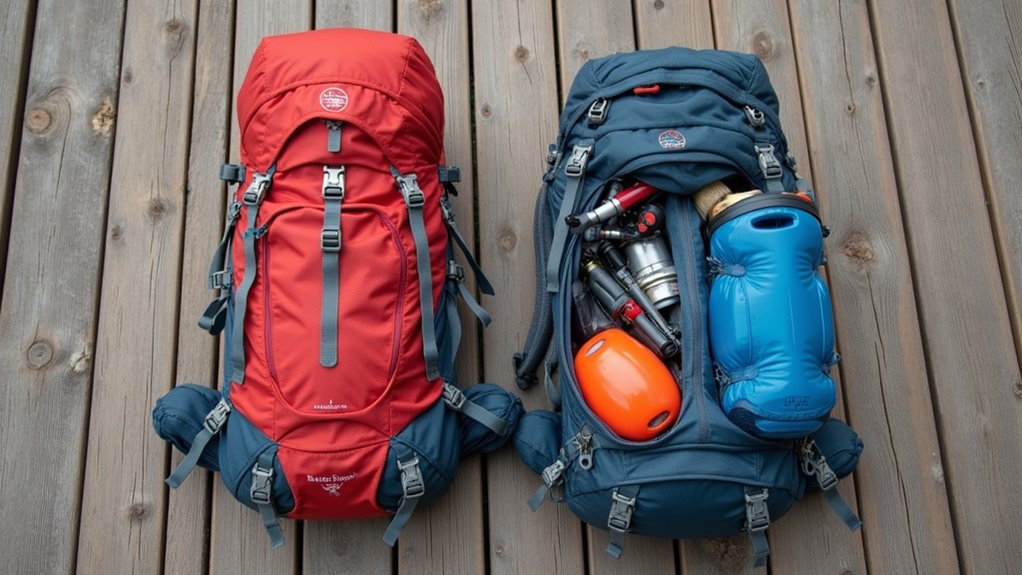
Proper weight distribution transforms a camping backpack from a burden into a comfortable companion on the trail. You should aim to keep the heaviest items close to your back and centered near your mid-spine level to maintain stability and reduce fatigue.
Remember that your pack shouldn’t exceed 20% of your body weight for ideal comfort and endurance. A successful hiking partnership focuses on balancing effort levels rather than trying to achieve equal weight distribution between packs. Essential camping gear for your dog can be added to your pack as needed.
When packing your backpack, follow these essential guidelines:
If you’re hiking with a partner, share the load strategically by dividing gear based on individual capacity.
Consider splitting consumables like water and food to maintain balanced weights between packs and enhance overall hiking efficiency.
Selecting the right material for your camping backpack can greatly impact its durability and performance on the trail.
While nylon offers excellent durability and water resistance, it’s more expensive and can degrade under UV exposure. WOLFpak provides backpacks designed with tactical functionality that ensure reliable performance in outdoor settings. If you’re on a budget, polyester provides good UV resistance and stain protection at a lower cost, though it won’t last as long as nylon.
For harsh conditions, consider ballistic nylon or Cordura nylon, which excel in abrasion resistance and weatherproofing. However, remember that Cordura may have lower tear resistance than standard nylon. Essential camping gear like a sturdy backpack is crucial for your next adventure.
To extend your backpack’s life, clean it regularly, store it properly, and repair small tears promptly.
If environmental impact concerns you, look for packs made from recycled materials or natural fibers, though you’ll need to weigh this against their reduced durability.
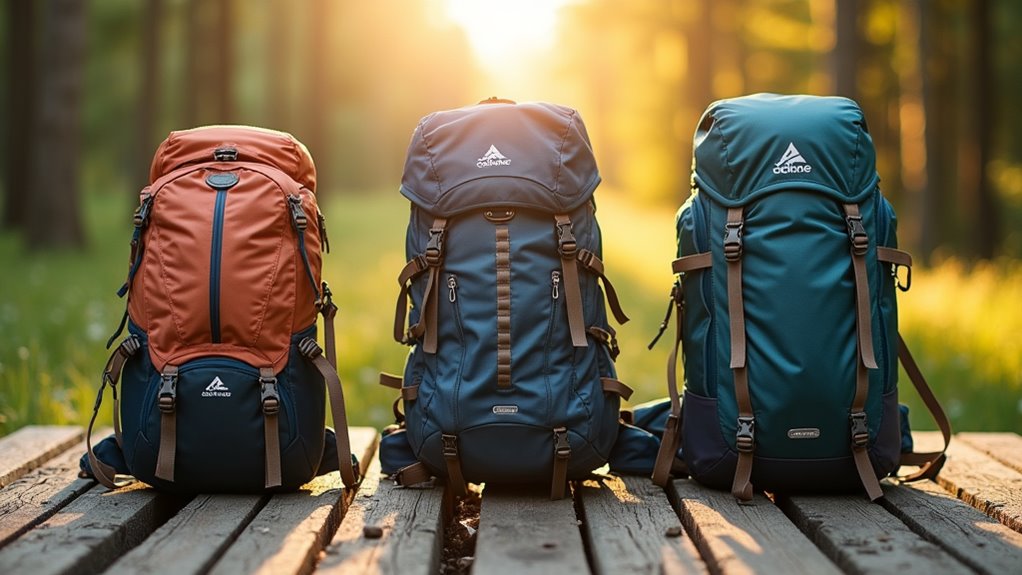
When you’re planning an outdoor adventure, the right backpack can make or break your experience. Your choice should align with your specific activity, trip duration, and gear requirements. A 50-75L backpacking pack works great for multi-day trips, while a 25-35L daypack suits shorter excursions. For optimal support with larger packs, look for models with internal frames that distribute weight effectively.
Consider these key factors when matching your pack to your adventure:
Essential camping gear can also play a role in determining the right backpack for your trip.
When you’re standing at the trailhead with your perfectly fitted pack hugging your body, you’ll know you’ve made the right choice. Your thoughtfully selected backpack isn’t just carrying gear—it’s your mobile home in the wilderness. By focusing on essential features and proper sizing while staying within your budget, you’ve invested in comfort and reliability. Let your pack be the bridge between you and countless outdoor adventures ahead.